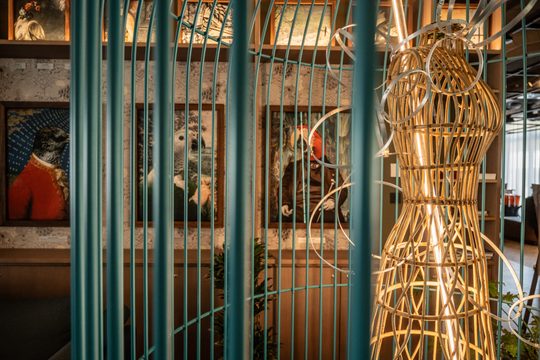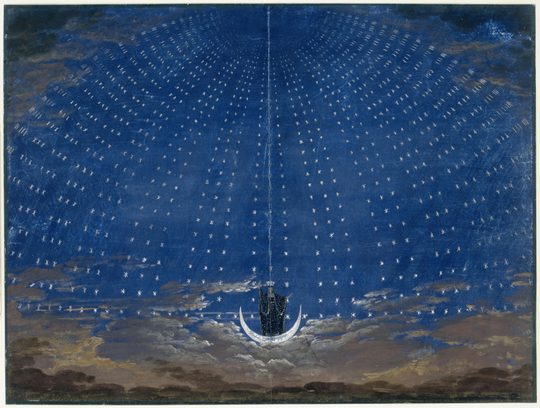In the Grace of Freedom, Queen of the Night

The oversized cage at the center of the hotel foyer seems far too large for any bird. Its bars are too widely spaced to contain one, and the entrance stands wide open. Yet inside, a sculpture made from a historic dressmaker’s mannequin, large metal rings, and a light rod takes on the form of a songbird. The artist, Thomas Baumann, has named it after a famous muse: the "Queen of the Night" from Mozart’s The Magic Flute—the operatic character known for arias with a vocal range and coloratura that rival even the song of a nightingale.

However, the Queen of the Night’s vocal brilliance is only superficial. Beneath the surface, she’s consumed by rage. The cause of her bitterness isn’t entirely clear, but much of it seems to stem from a prison she’s created for herself. In this way, the body of the sculpture echoes the idea of confinement, and the title of the piece carries an additional layer: "In the Grace of Freedom."
A similar cage metaphor was used by architect and set designer Karl Friedrich Schinkel in 1815 for his renowned design of the Sternenhalle (Star Hall) for the Queen of the Night. His star-shaped dome, seen from a central perspective, resembles a massive cage, with the Queen descending on her crescent moon, like a songbird perched on a branch.
Two more sculptures by Thomas Baumann are displayed in the atrium of Hotel Galántha, where large metal rings and light rods create sparkling chandeliers suspended in the air.

